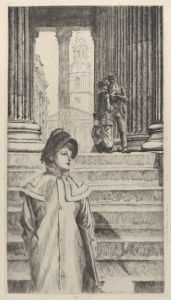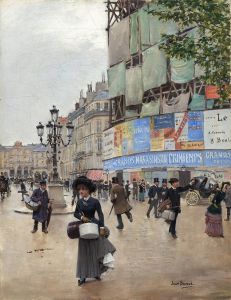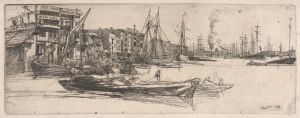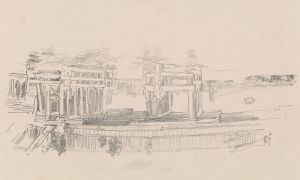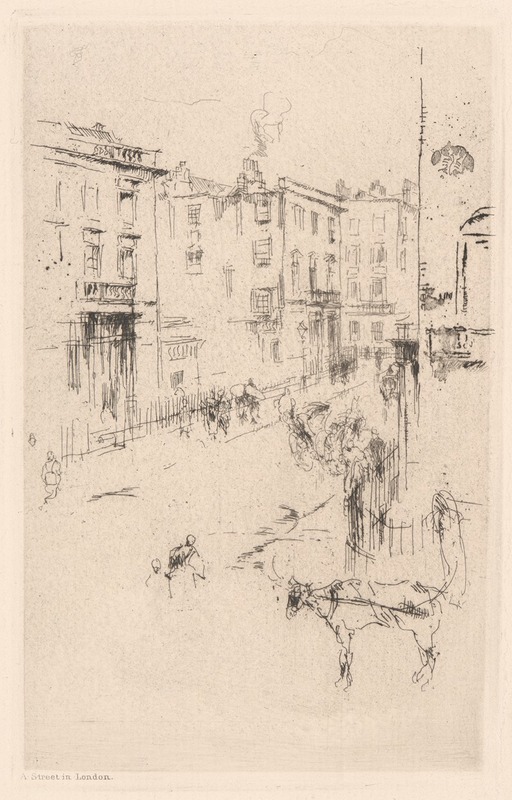
A Street in London
A hand-painted replica of James Abbott McNeill Whistler’s masterpiece A Street in London, meticulously crafted by professional artists to capture the true essence of the original. Each piece is created with museum-quality canvas and rare mineral pigments, carefully painted by experienced artists with delicate brushstrokes and rich, layered colors to perfectly recreate the texture of the original artwork. Unlike machine-printed reproductions, this hand-painted version brings the painting to life, infused with the artist’s emotions and skill in every stroke. Whether for personal collection or home decoration, it instantly elevates the artistic atmosphere of any space.
"A Street in London" is a painting by the American-born artist James Abbott McNeill Whistler, who is best known for his contributions to the Aesthetic Movement and his innovative approach to art. Whistler was born on July 10, 1834, in Lowell, Massachusetts, and spent much of his career in Europe, particularly in London and Paris. His work often focused on the interplay of light and color, and he was a key figure in the transition from Realism to Impressionism.
The painting "A Street in London" captures a scene from the bustling streets of the British capital, reflecting Whistler's keen interest in urban life and his ability to convey atmosphere and mood through his art. While the exact date of the painting is not definitively known, it is believed to have been created during the late 19th century, a period when Whistler was actively exploring the themes of cityscapes and nocturnes.
Whistler's technique in "A Street in London" showcases his mastery of composition and his distinctive use of color and light. The painting likely features a muted palette, characteristic of Whistler's style, which often employed subtle gradations of tone to create a sense of harmony and balance. This approach can be seen in his other famous works, such as "Nocturne in Black and Gold: The Falling Rocket" and "Arrangement in Grey and Black No. 1" (commonly known as "Whistler's Mother").
The subject matter of "A Street in London" aligns with Whistler's fascination with the urban environment and the everyday scenes that he encountered in the city. His ability to capture the essence of a moment, whether it be the quietude of a nighttime street or the dynamic energy of a busy thoroughfare, is a testament to his observational skills and his innovative artistic vision.
Whistler's influence extended beyond his paintings; he was also known for his writings on art and his role in the art community. His famous "Ten O'Clock Lecture," delivered in 1885, articulated his philosophy of "art for art's sake," emphasizing the importance of beauty and aesthetic experience over moral or narrative content. This lecture solidified his position as a leading figure in the Aesthetic Movement and had a lasting impact on the development of modern art.
Throughout his career, Whistler faced both acclaim and controversy. His legal battle with the art critic John Ruskin, who accused him of "flinging a pot of paint in the public's face," resulted in a famous libel case that Whistler ultimately won, though it left him financially strained. Despite these challenges, Whistler's work continued to be celebrated for its originality and its contribution to the evolution of art in the late 19th and early 20th centuries.
In summary, "A Street in London" by James Abbott McNeill Whistler is a significant work that exemplifies the artist's unique approach to capturing the urban landscape. Through his innovative use of color, light, and composition, Whistler created a painting that not only reflects the vibrancy of London but also highlights his enduring influence on the art world.





